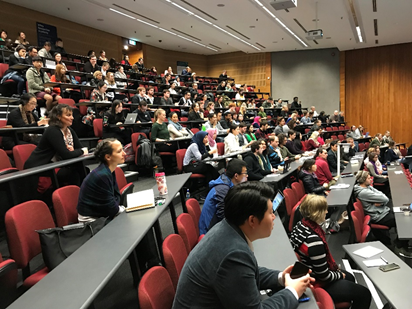finding-ways-to-get-users-the-content-they-need
February 02, 2015
The American Library Association-Midwinter continues through tomorrow and If you haven't stopped by Wiley's booth yet (#2230), we hope you can stop by today to say hello. Below, library director Elizabeth Lorbeer shares her thoughts on supporting users in gaining acess to the most useful research for their needs.
As a library director at an academic medical library, the complaint that challenges me the most from our users is the lack of access to currently published journal articles. Even though my school’s library users have access to over 61,000 online journal and newspaper titles, it appears several more have eluded capture into our digital collection. As I ponder the conundrum of: “What is the magical number of journals to quench the thirst of the research-intense scholar?”, the answer lies in how we record publications. Academic libraries have access to several bibliographic databases, which are discipline and sub-discipline specific that index and abstract the world’s scholarly knowledge. What makes these bibliographic databases so powerful, and necessary, is the ability to find published and referred content in a controlled and organized manner. With the increase of born-digital publications and retrospective scanning of print archives, indexing and abstracting services have significantly grown. Expansion of the scholarly publishing landscape offers the richest opportunity to discover and sift through the world’s publication record, even if it is overwhelming to most searchers. Bibliographic databases range in size from the very small, sub-discipline to the very large, multi-discipline database that indexes over 21,000 scholarly journal titles. Academic libraries purchase yearly subscriptions to several subject specific databases and,additionally, utilize web scale discovery systems to search all of their bibliographic database subscriptions at once to increase accessibility to recorded knowledge.
A popular and freely available bibliographic database is the National Institute of Health’s MEDLINE file which currently indexes 5,642 journal titles and contains approximately 21 million records. MEDLINE is the primary journal citation database for the health professional community to find peer-reviewed and refereed papers in the biomedical sciences. But, within MEDLINE exists bibliographic records to restricted and unrestricted full-text articles. For the rushed or novice searcher, the use of the full-text only filter in the PubMed search engine limits results to articles that can be quickly retrieved. However, this quick fix fails to retrieve a larger body of work that warrants review by the searcher, which in turn results in mediocre discourse in the academy.
Access to full-text content varies among academic libraries throughout the world. Where librarians succeed is in their ability to help users discover knowledge, but where we strive to improve is the ability to speed up delivery of non-subscribed full-text articles. It’s not financially feasible for any academic library to purchase subscription access to every single journal title recorded by the indexing and abstracting services. For the academic user searching within his/herdiscipline’s database, it is often a game of chance if the full text article will be available or embargoed. There is another solution that libraries have begun to implement. It is the use of mediated and unmediated article pay- per-view services to rapidly deliver content from unsubscribed journal titles straight to the user.
Document delivery and article pay per view services have been around for a long time. They work well, but most students and faculty have to wait for the librarian to process their request for a non-subscribed article. Turnaround time for the library to supply the document is anywhere from 24 hours to 5 business days. If the useris really desperate, they might buy the article directly from the publisher or ask friends through their social network to supply a copy. Almost all college students will tell you they cannot afford the publisher’s price to purchase an article, so publishers and libraries are beginning to pilot article rental options. What faculty and students desire from their school’s library is the ability to move towards employing pay-per -view article demand services that allow seamless access to articles in non-subscribed journal titles. Though this option exists, many academic libraries are cautious to move to unmediated systems as the cost of content still varies too widely to control.. Article rental appears to have potential as it costs significantly less for the same content without the ability to archive or print the document.
My library uses an unmediated pay per view service, a document delivery service and an article rental service, besides maintaining subscriptions to large bundles of electronic journals to supply content. Pay per view services enhance the library’s current collection by making scholarly content available to our students and faculty which otherwise might be unavailable. The cost charged to the library to purchase or rent an article is displayed for the user to make an informed decision. For those who still want the article, but are not willing to charge the cost of the article to the library, they have the option to use our interlibrary loan service.
In times of flat budgets and dwindling financial support from public and private dollars in higher education, academic libraries are working collaboratively with publishers to build agile workflows to deliver scholarly content to the academy quickly. Many librarians are embarking on an era of managing just-in-time collections to meet the vast information needs of our users.
Image Credit/Source:Ravi Tahilramani/Getty Images



